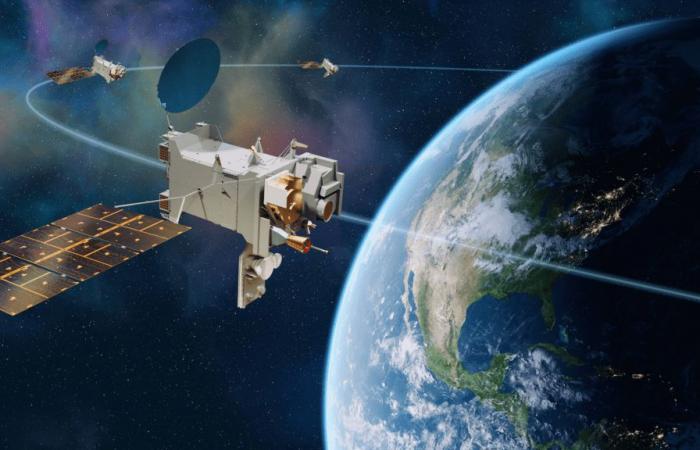On June 18, 2024, NASA announced that it had selected Lockheed Martin to develop and build the new constellation of geostationary weather satellites, called Geostationary Extended Observations (GeoXO), on behalf of the National Oceanic and Atmospheric Administration (NOAA). This contract, worth up to $2.27 billion, includes the construction of three satellites with the option to request four more.
The GeoXO program represents an evolution from the GOES-R satellite series, also developed by Lockheed Martin. These new satellites will not only continue weather observations, but will expand capabilities to include new measurements of oceans and air pollution. These updates will serve to provide more accurate weather forecasts also to face new environmental challenges.
Lockheed Martin Commercial Civil Space Division Vice President and General Manager Kyle Griffin said, “Our team is excited and ready to move forward with designing and building this critical national capability. Our GeoXO design benefits greatly from the experience gained with GOES-R satellites over the last 15 years, integrating new digital technologies not only on board vehicles, but also into the design and development of this powerful weather monitoring platform of the future.”
New Observation Skills and Tools
GeoXO satellites will offer advanced capabilities, including the first geostationary observations of coastal ecosystems, hyperspectral sensors to map the state of the atmosphere, enhanced lightning observations to monitor extreme weather, and extended observations of harmful pollutants in the air at scale continental.
The GeoXO constellation will include three operational satellites located in the east, west and center of North America, respectively. In this way the eastern satellite will also cover part of the Atlantic Ocean and the western one part of the Pacific Ocean. Each satellite, stabilized on three axes, will host three instruments. The central one will be equipped with an infrared sensor and an instrument for studying atmospheric composition, while satellites in the eastern and western positions will carry an imager, a lightning mapper and an instrument for studying the oceans.
The first launch of the GeoXO satellite is scheduled for the early 2030s, with the goal of maintaining and extending NOAA’s critical geostationary observations into the late 2050s. The GeoXO satellite platform will be based on the upgraded LM2100™ satellite bus by Lockheed Martin. SmartSat™ technology will enable software upgrades and new capabilities as environmental data needs and demands change.
The legacy of the GOES-R program
For more than 50 years, Lockheed Martin has built and launched more than 120 weather and environmental satellites for U.S. military and civilian government agencies. The GOES-R satellites in particular have revolutionized lightning observations and mapping from geostationary orbit, the ability to detect forest fires, and the monitoring of extreme weather phenomena.
The fourth and final satellite in the GOES-R series, GOES-U, is scheduled to launch on June 25, 2024, from NASA’s Kennedy Space Center in Florida.
NASA and NOAA oversee the development, launch, testing and operation of all satellites in the GeoXO program as well as GOES-R. NOAA funds and manages the program, operations and data production. On behalf of NOAA, NASA and Lockheed Martin develop and build the instruments and satellites and manage the launch.
© 2024 Astrospace.it All rights reserved. This article may be reproduced or distributed in full only with the written authorization of Astrospace.it or partially with the obligation to cite the source.







